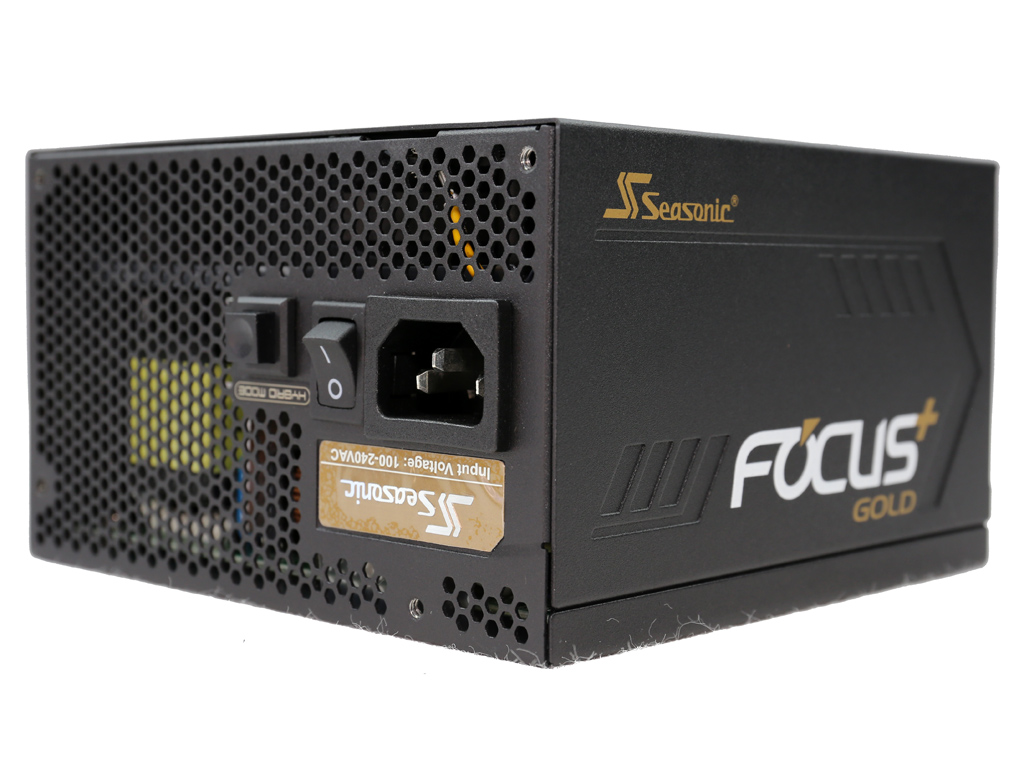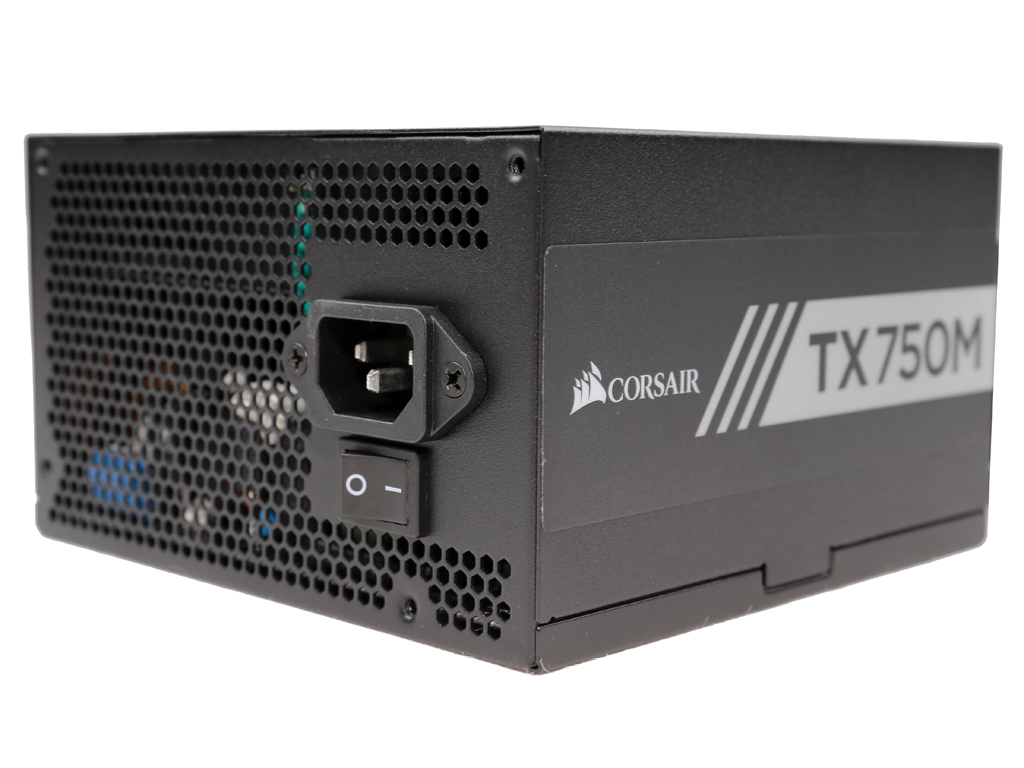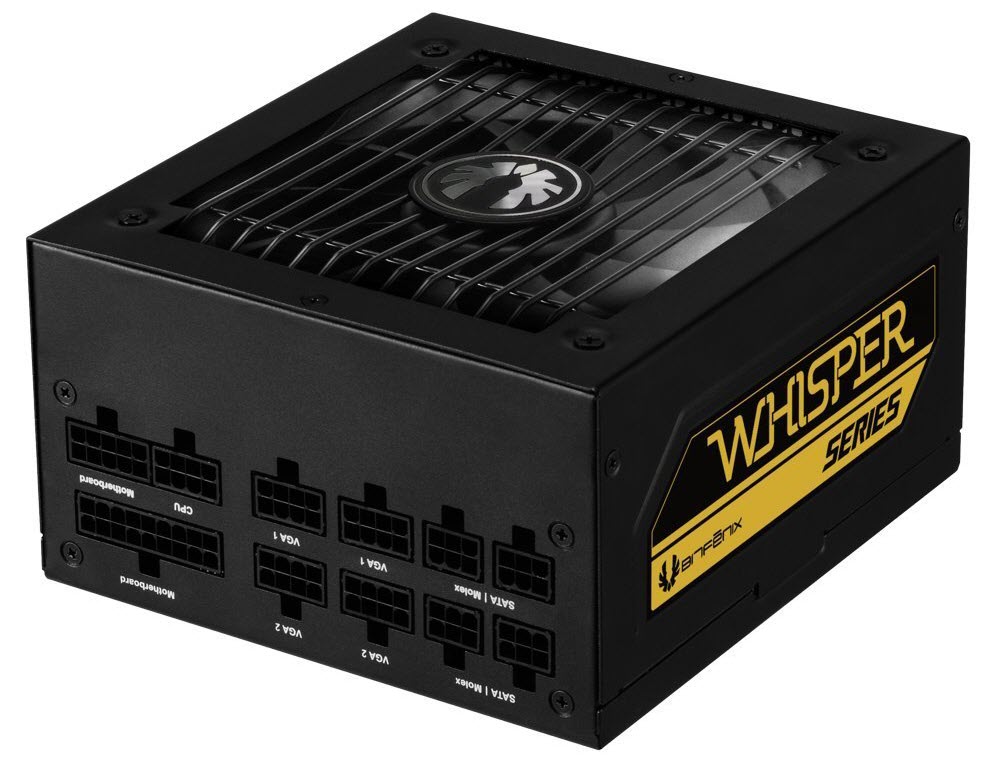Seasonic Focus Plus 750 Gold PSU Review
Why you can trust Tom's Hardware
Load Regulation, Hold-Up Time & Inrush Current
To learn more about our PSU tests and methodology, please check out How We Test Power Supply Units.
Primary Rails And 5VSB Load Regulation
Load Regulation testing is detailed here.
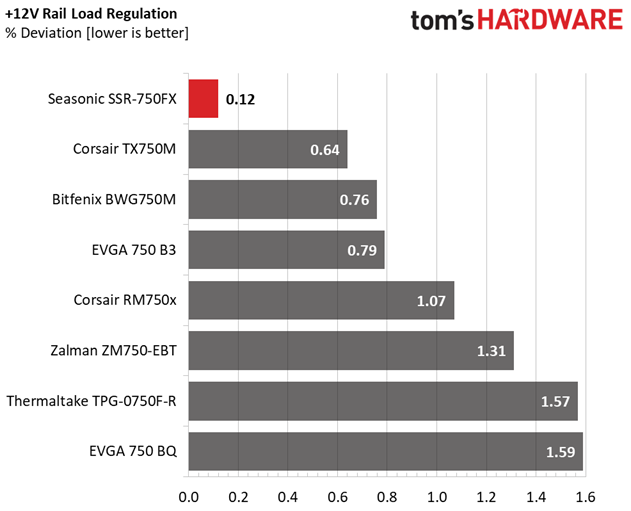
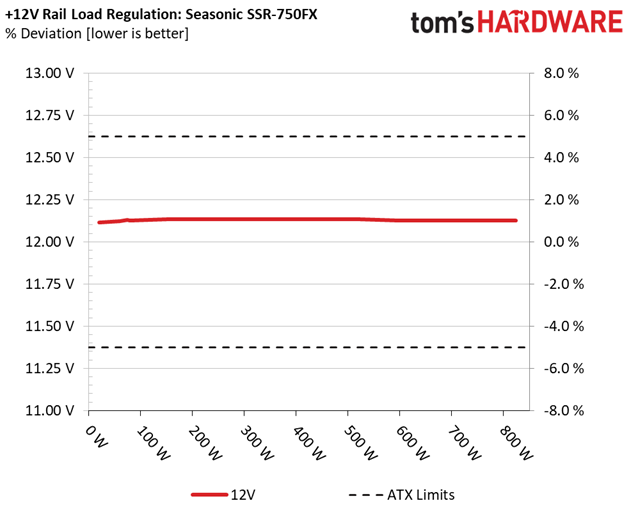
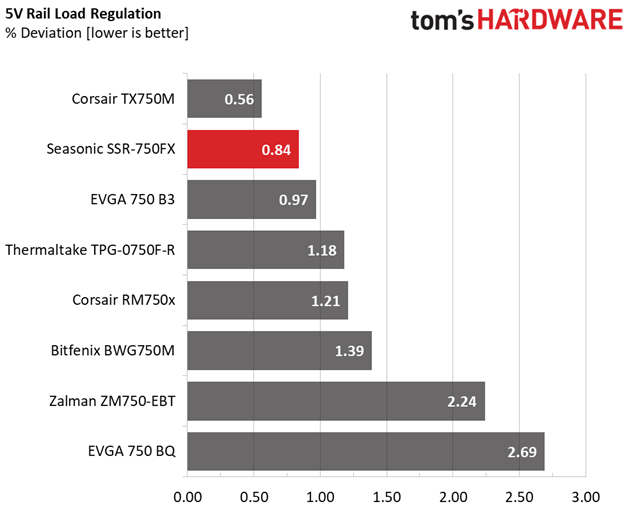
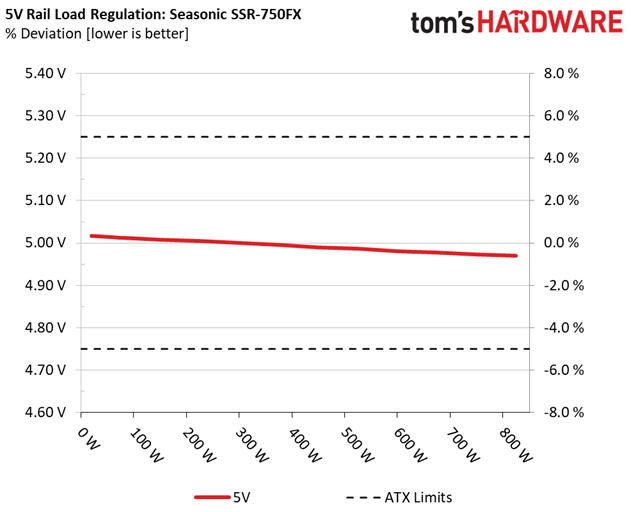
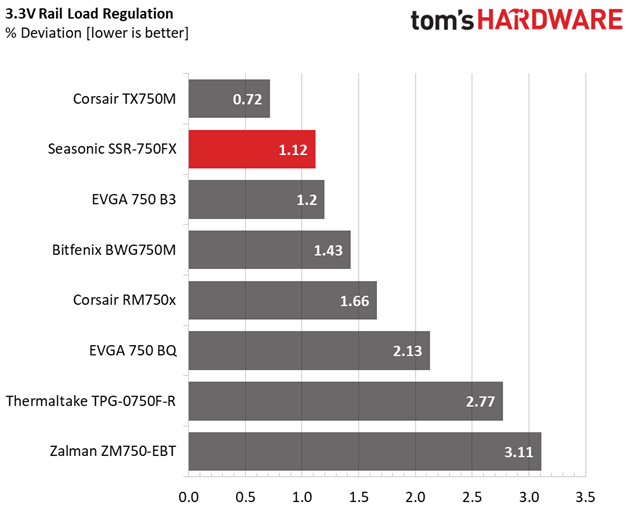
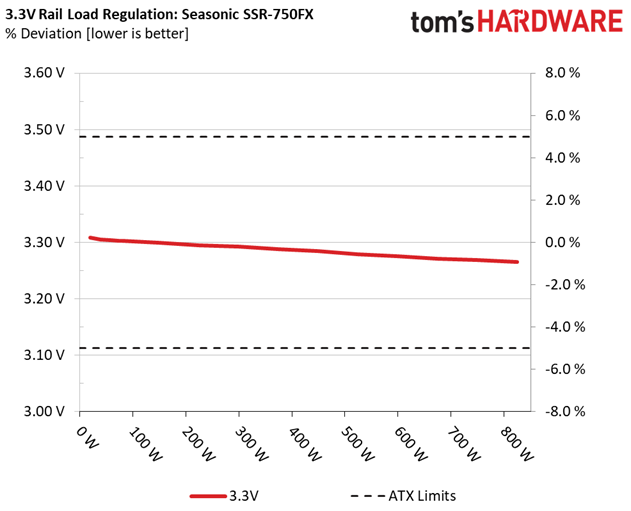
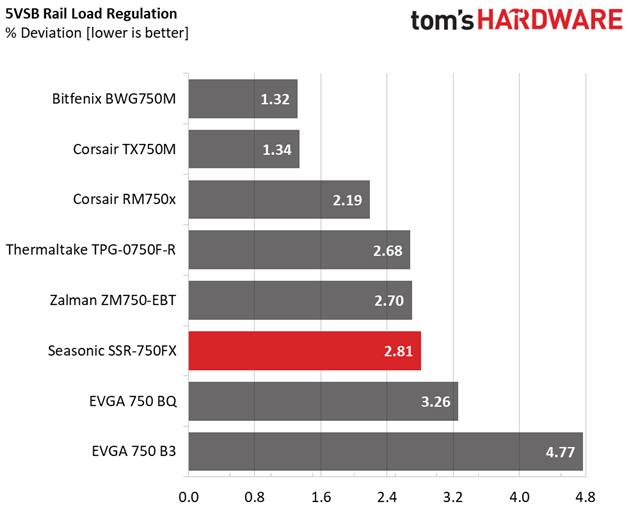

Hold-Up Time
Our hold-up time tests are described in detail here.
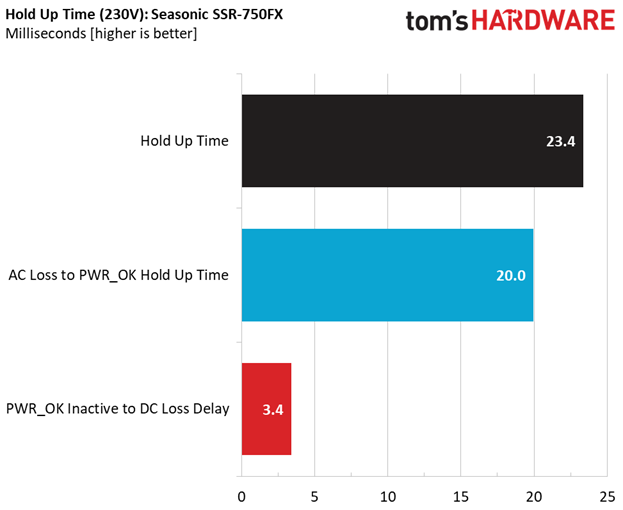
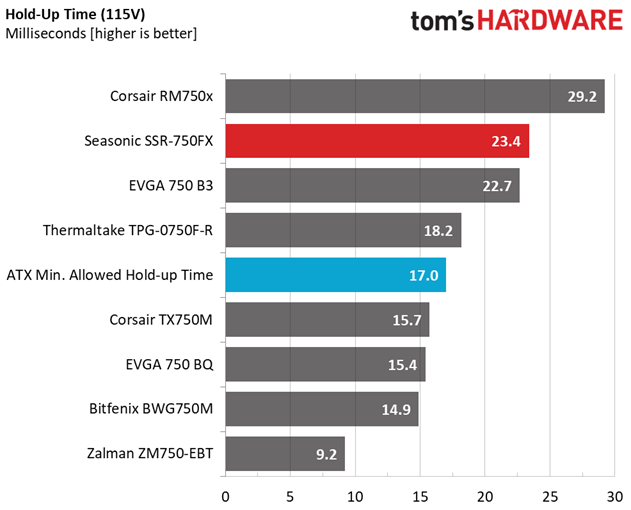
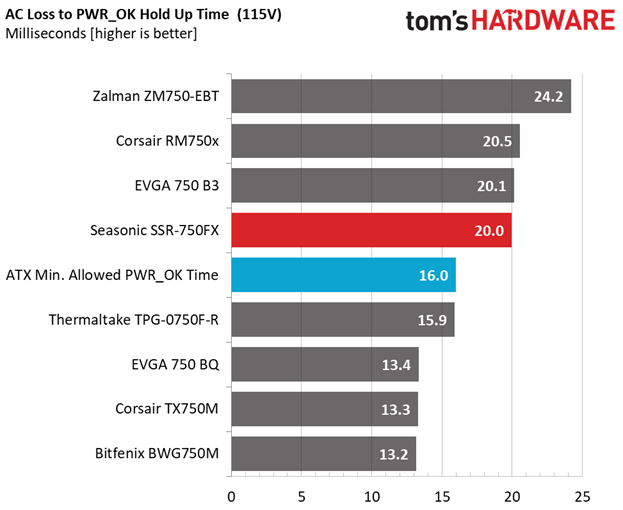
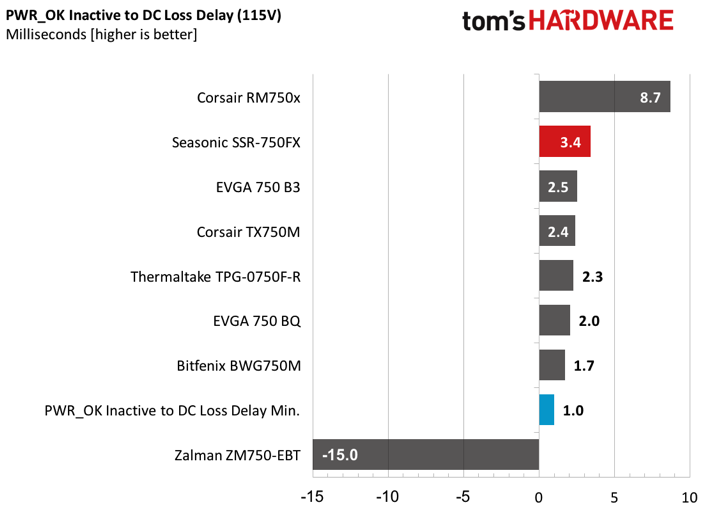
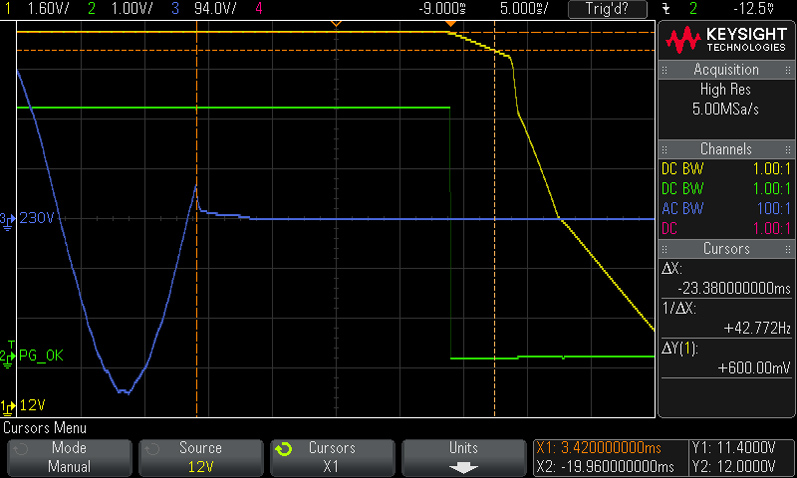
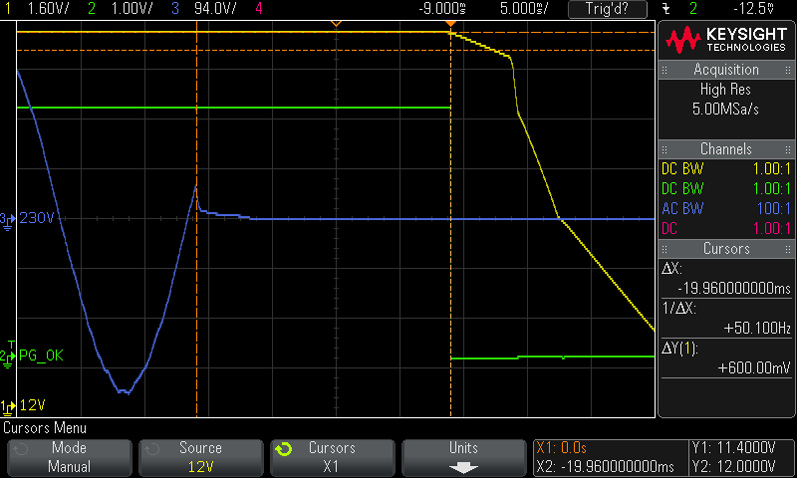
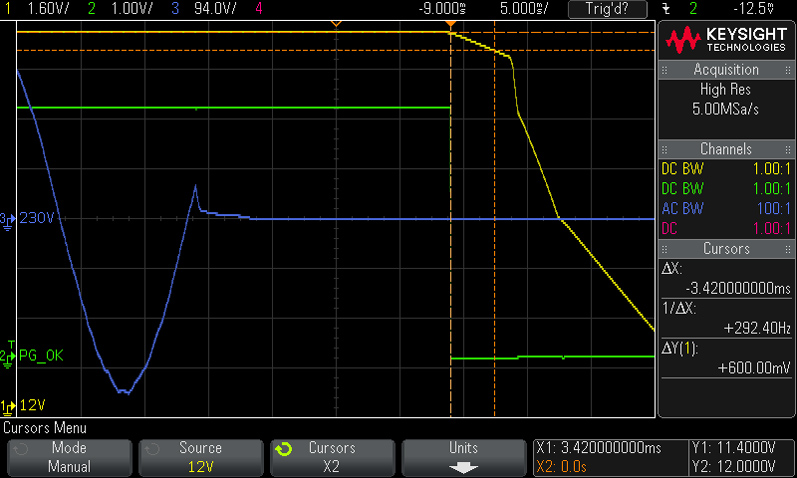
The hold-up time we measure is much longer than the ATX spec's required 17ms. Moreover, Seasonic's power-good signal is accurate; it drops before the rails go out of spec.
Inrush Current
For details on our inrush current testing, please click here.
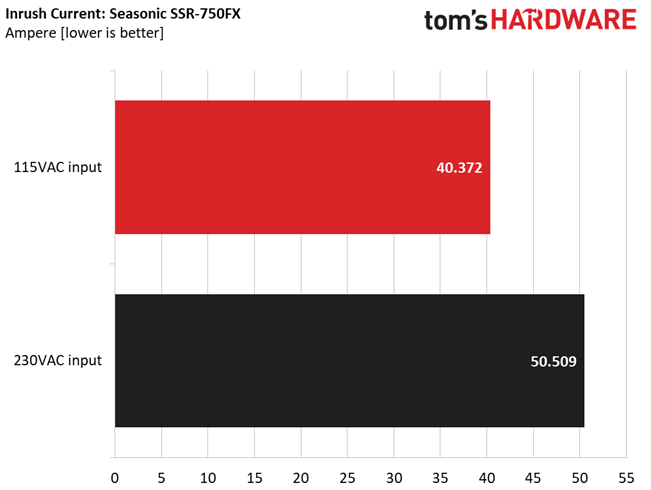
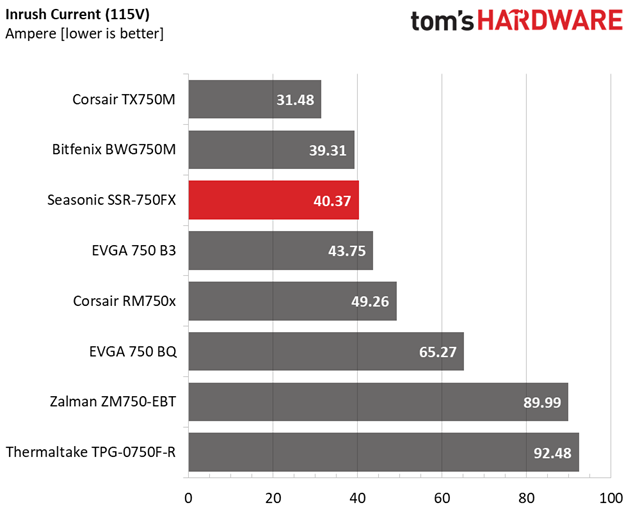
The inrush current is suppressed efficiently by an NTC thermistor.
Load Regulation And Efficiency Measurements
The first set of tests reveals the stability of the voltage rails and the SSR-750FX's efficiency. The applied load equals (approximately) 10 to 110 percent of the PSU's maximum load in increments of 10 percentage points.
Get Tom's Hardware's best news and in-depth reviews, straight to your inbox.
We conducted two additional tests. During the first, we stressed the two minor rails (5V and 3.3V) with a high load, while the load at +12V was only 0.1A. This test reveals whether a PSU is compatible with Intel's C6/C7 sleep states or not. In the second test, we determined the maximum load the +12V rail could handle with minimal load on the minor rails.
| Test # | 12V | 5V | 3.3V | 5VSB | DC/AC (Watts) | Efficiency | Fan Speed | PSU Noise | Temps (In/Out) | PF/AC Volts |
|---|---|---|---|---|---|---|---|---|---|---|
| 1 | 4.380A | 1.996A | 1.994A | 0.981A | 74.721 | 85.411% | 0 RPM | <6.0 dB(A) | 42.05°C | 0.955 |
| 12.131V | 5.012V | 3.303V | 5.095V | 87.484 | 38.38°C | 115.20V | ||||
| 2 | 9.797A | 2.992A | 2.999A | 1.180A | 149.732 | 89.414% | 0 RPM | <6.0 dB(A) | 42.62°C | 0.983 |
| 12.132V | 5.008V | 3.299V | 5.083V | 167.459 | 38.80°C | 115.20V | ||||
| 3 | 15.560A | 3.498A | 3.517A | 1.379A | 224.860 | 90.296% | 700 RPM | 14.6 dB(A) | 38.85°C | 0.989 |
| 12.132V | 5.004V | 3.295V | 5.071V | 249.026 | 52.18°C | 115.19V | ||||
| 4 | 21.307A | 4.004A | 4.008A | 1.580A | 299.705 | 90.300% | 550 RPM | 10.4 dB(A) | 39.00°C | 0.991 |
| 12.132V | 5.000V | 3.292V | 5.059V | 331.900 | 53.36°C | 115.19V | ||||
| 5 | 26.716A | 5.002A | 5.014A | 1.780A | 374.628 | 89.703% | 560 RPM | 10.5 dB(A) | 40.37°C | 0.990 |
| 12.134V | 4.996V | 3.288V | 5.045V | 417.633 | 55.25°C | 115.27V | ||||
| 6 | 32.118A | 6.016A | 6.026A | 1.985A | 449.554 | 89.092% | 735 RPM | 15.4 dB(A) | 40.60°C | 0.991 |
| 12.135V | 4.990V | 3.284V | 5.034V | 504.597 | 55.86°C | 115.17V | ||||
| 7 | 37.534A | 7.018A | 7.042A | 2.190A | 524.474 | 88.327% | 1325 RPM | 31.4 dB(A) | 42.34°C | 0.991 |
| 12.133V | 4.986V | 3.279V | 5.019V | 593.787 | 57.82°C | 115.17V | ||||
| 8 | 42.959A | 8.034A | 8.062A | 2.395A | 599.416 | 87.492% | 1960 RPM | 41.4 dB(A) | 43.07°C | 0.992 |
| 12.128V | 4.981V | 3.275V | 5.006V | 685.112 | 59.02°C | 115.16V | ||||
| 9 | 48.809A | 8.539A | 8.586A | 2.400A | 674.436 | 86.791% | 2310 RPM | 45.1 dB(A) | 44.06°C | 0.992 |
| 12.126V | 4.977V | 3.271V | 4.998V | 777.079 | 60.62°C | 115.16V | ||||
| 10 | 54.388A | 9.058A | 9.085A | 3.011A | 749.284 | 85.960% | 2320 RPM | 45.2 dB(A) | 45.87°C | 0.993 |
| 12.127V | 4.973V | 3.268V | 4.977V | 871.661 | 62.27°C | 115.15V | ||||
| 11 | 60.564A | 9.067A | 9.093A | 3.015A | 824.135 | 84.992% | 2320 RPM | 45.2 dB(A) | 47.30°C | 0.993 |
| 12.126V | 4.970V | 3.265V | 4.970V | 969.658 | 65.69°C | 115.15V | ||||
| CL1 | 0.099A | 12.013A | 12.004A | 0.004A | 100.757 | 84.378% | 560 RPM | 10.5 dB(A) | 43.09°C | 0.973 |
| 12.145V | 4.998V | 3.290V | 5.101V | 119.412 | 55.37°C | 115.21V | ||||
| CL2 | 61.936A | 1.005A | 1.002A | 1.001A | 764.309 | 86.243% | 2320 RPM | 45.2 dB(A) | 46.36°C | 0.993 |
| 12.125V | 4.982V | 3.279V | 5.037V | 886.231 | 62.78°C | 115.16V |
Load regulation on the +12V rail is very tight. It's a little looser on the minor rails, but still satisfactory. Only the 5VSB rail comes close to a 3% deviation, so it could be improved upon. When it comes to efficiency, the 80 PLUS Gold specification requires at least 87% efficiency with 20% and 100% of this PSU's max-rated capacity, and 90% efficiency under 50% load. As you can see, the first requirement is met. The PSU comes close at 50% load. However, under full load, there is a >1% difference compared to the desired 87%. As always, though, we run our tests at much higher ambient temperatures than the 80 PLUS organization's unrealistic 23°C levels.
The fan profile gets aggressive once the load and operating temperatures get too high. In our opinion, a larger fan and proper fan profile would solve this problem, enabling the same airflow at lower rotational speeds. Since a 140mm fan is out of the question, Seasonic could try using a 130mm fan like EVGA does with its G3 models.
MORE: Best Power Supplies
MORE: How We Test Power Supplies
MORE: All Power Supply Content
Current page: Load Regulation, Hold-Up Time & Inrush Current
Prev Page Teardown & Component Analysis Next Page Efficiency, Temperature & Noise
Aris Mpitziopoulos is a contributing editor at Tom's Hardware, covering PSUs.
-
none77 Thank you for the detailed review.Reply
In the transient response test
Advanced Transient Response at 50 Percent – 200ms
the +3.3 pass.
-
BugariaM As always, here are the most detailed reviews on the PSU.Reply
Thank you and keep it up!
The only thing that is not quite clear to me. What is the criterion for voltage drop in % to get PASS/FAIL in "Advanced Transient Response Tests"?
You declare that:
"In all tests, we measure the voltage drops." The voltages should remain within the ATX specification's regulation limits. "
For ATX 2.2 we have:
12v - 10%
5v - 5%
3.3v - 5%
5VSB - 5%
However, looking at your reviews, there are often situations where, at <5%, the power supply gets the FAIL mark and vice versa, some at >5% receive PASS
Why is this happening? -
Aris_Mp the limit is 5% however the voltage rails of the PSUs' under test in the majority of cases aren't at the nominal voltages, but higher, so even with 5% deviation voltages go don't bellow the limits that the ATX spec sets (11.4V, 4.75V, 3.14V). Only if a rail goes below those voltage levels it fails. The 5% is just an indication that the ATX provides to specify the voltages above.Reply -
fredlaso Dell Inspiron 5675 Desktop, PSU (power supply unit), upgrade. Would this PSU compatible with Dell Inspiron 5675 Desktop. It came with 460W I would like to replace it with PSU between 650 to 750W. I tried at Dell forums but cannot get a clean link which one would be compatible.Reply
I would greatly appreciate if someone could help me out. Thank you kindly in advance:
http://en.community.dell.com/support-forums/desktop/f/3514/t/20019321?pi21953=1#21018407
http://en.community.dell.com/support-forums/desktop/f/3514/p/20024419/21031446#21031446
System Comp,:
Compatible Power Supply needed for Inspiron 5675 Gaming Power Supply
Specs:
AMD Ryzen 7 1700X 3.4GHz Octa-Core Processor
8GB 2400MHz DDR4 RAM
1TB 7200 RPM Hard Drive
AMD Radeon RX 580 8GB GDDR5 Graphics Card
DVD+RW Drive
Dual Band WiFi 802.11ac + Bluetooth 4.1
Windows 10 Home (64-bit)
460 Watt Power Supply w/ Polar Blue LED
Includes: Dell KB216 Wired Keyboard + Dell MS116 Wired Mouse
Ports:
6x USB 3.0
1x USB 3.1 Type-C Gen 1
2x USB 2.0
1x Audio Combo Jack
1x 3-in-1 Media Card Reader
1x P/S 2
1x 7.1 Channel Audio Out
Expansion Slots:
3x 3.5" bay
2x 2.5" bay
2x PCIe x1
2x PCIe x16
http://en.community.dell.com/support-forums/desktop/f/3514/t/20019321?pi21953=1#21018407
http://en.community.dell.com/support-forums/desktop/f/3514/p/20024419/21031446#21031446 -
paulinosaka My Seasonic Platinum began failing under load after only 10 months. Paid cash here in Japan at Joshin - couldnt find reciept - honestly never thought I would need it ever. Seasonic would not help me.?Reply
REPLY
